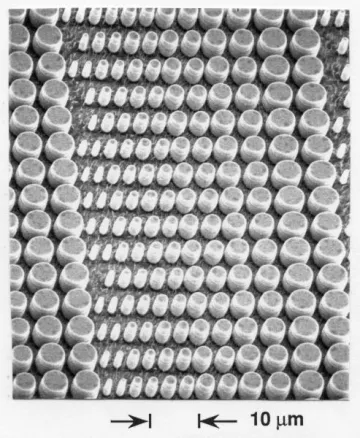
The Jack Jewell Endowed Research Award for Extreme Optics is given to a College of Optical Sciences Ph.D. student whose work best illustrates a passion for exceeding perceived “limitations” of optical technology in any subfield.
Jack Jewell is an independent consultant. Upon receiving his Ph.D. (UA Optical Sciences Center) developing optical logic devices under Hyatt Gibbs in 1984, he worked AT&T Bell Laboratories until 1991, leaving as a Distinguished Member of Technical Staff.
In 1989, Jack led a Bell Labs / Bellcore team* that demonstrated over 1 million vertical-cavity surface-emitting lasers (VCSELs) on a ~5x8mm chip. The extreme number, size and density attracted attention. The underlying innovations sparked worldwide industrial development of VCSELs, and are present in all commercial VCSELs (thin/practical active regions, >99% semiconductor mirror reflectivities, graded interfaces enabling current flow, and the enabled all-semiconductor design). The Bell Labs effort stemmed from Jack's Ph.D. work at Optical Sciences. VCSELs are used in fiber communications, laser mice, miniature atomic clocks, lidar sensors, medical diagnostics, and structured-light generation. Volume for VCSEL chips is ~1 billion/year, and many of those chips contain 100’s of VCSELs. Some supercomputers use >1 million VCSEL-based fiber interconnections.
(*Axel Scherer, Sam McCall, Yong-Hee Lee, Jim Harbison, Leigh Florez, Sue Walker)
Tiny portion of the initial VCSEL chip. SEM image by Axel Scherer, taken just after he etched the devices, in the wee hours of May 11, 1989.

Tiny portion of the initial VCSEL chip. SEM image by Axel Scherer, taken just after he etched the devices, in the wee hours of May 11, 1989.
Jack left Bell Labs to co-found Photonics Research Inc. in 1991, the first company committed to commercializing VCSELs (later Vixel Corp., and spinoff Cielo). In 1995 he founded Picolight Inc. Though small, both companies were leaders in VCSEL innovation (e.g. high-efficiency electrical injection, oxide VCSEL embodiments, microoptics) and standards development (e.g. Ethernet which opened the first large markets for VCSEL-based fiber-optic links). Vixel went public in 1999, and Picolight was acquired by JDSU in 2007. Jack has been an independent consultant since 2008, including contributions to Ethernet standards in the 100-400 Gigabit/sec, outlining a path for VCSEL-based Ethernet links up to 6.4 Terabits/sec.
Jack has 72 US patents and over 150 publications. Besides the Distinguished Member of Technical Staff from Bell Labs, he received the Distinguished Inventor Award in 1991, was an IEEE LEOS Distinguished Lecturer (1991-92), was awarded the Best Technical Advance in Optical Communications in 2001, and received the Aron Kressel Award from IEEE Photonics Society in 2009. He now spends much of his time ultrarunning and practicing photography.
Eligibility:
Applicants must submit a one-page narrative explaining his/her research project as it meets the metrics for the award, including achievements as well as future goals to demonstrate innovative applications of optics. The applicant must be a PhD student at the College of Optical Sciences whose work best illustrates a passion for exceeding perceived “limitations” of optical technology in any subfield. The College of Optical Sciences faculty award committee will review all eligible applications to determine an awardee. Final approval for the award will be made by the Dean of the College of Optical Sciences.
Recipients
Dominique "Nikki" Galvez
Chaohan Cui
Zhihan Hong
Miaomiao Xu
Hekun Huang
Xin Li
